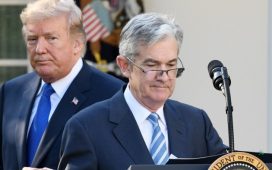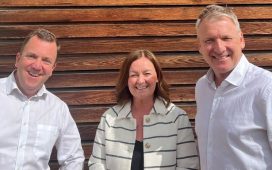Unlock the Editor’s Digest for free
Roula Khalaf, Editor of the FT, selects her favourite stories in this weekly newsletter.
Top Federal Reserve officials have left the door open to half-point interest rate cuts, even as they signalled the central bank would move cautiously at its meeting this month, following a mixed jobs report on Friday.
In appearances on Friday, Governor Christopher Waller and President John Williams of the New York Fed endorsed a series of rates cuts this year given the fall in inflation and softening of the US labour market.
Now that “downside risks” had increased, Waller said the economic backdrop “requires action” from the Fed to avoid undue damage to the labour market, which he said was “continuing to soften but not deteriorate”.
Waller stressed that the economy was “performing in a solid manner” with “good” prospects for continued growth, adding that he expected that rate cuts would be “done carefully”.
But he signalled he was open to cutting more aggressively if the data warranted it — comments that sparked a sharp rally in US Treasuries.
“If the data suggests the need for larger cuts, then I will support that as well,” he said.
The rate-sensitive two-year Treasury yield declined by 0.09 percentage points to 3.66 per cent. The 10-year yield fell 0.05 percentage points to 3.69 per cent.
Williams on Friday also signalled that the Fed would react to incoming data as needed, even as he underscored that the economy remains on solid footing and that monetary policy was “well positioned” to keep it that way.
Their comments came just after data showed the US added 142,000 jobs in August, while the unemployment rate ticked lower to 4.2 per cent.
The figures from the Bureau of Labor Statistics released on Friday came in below economists’ expectations for 165,000 new positions but surpassed the downwardly revised 89,000 jobs created in July.
A month ago, the BLS reported that employment in July rose by just 114,000, which lifted the unemployment rate to 4.3 per cent and sparked concerns that the world’s largest economy was heading for a recession.
Fed officials will meet on September 17-18 when they are expected to agree to lower rates by a quarter point from their current 23-year high of 5.25-5.5 per cent.
Analysts said market expectations for a 0.5 percentage point cut in September was an overreaction.
“The market is overly worried about a recession, and this report shows that there is no sign of a recession,” Torsten Slok, Apollo Global Management chief economist, said. “There is no need to go 50 when the unemployment rate is falling.”
Fed officials are scrutinising the labour market for signs of weakness as they try to push inflation back down to the central bank’s 2 per cent target, which is based on the annual change in the personal consumption expenditures index.
“Core” PCE, which strips out volatile food and energy prices and is closely watched by policymakers, was 2.6 per cent in August, compared with a peak of more than 5 per cent in 2022.
The increase in August payrolls was in line with the average pace of jobs growth in recent months but marked a slowdown from the monthly gain of 202,000 over the past 12 months, according to the BLS.
Construction and healthcare sectors were the strongest. The manufacturing sector recorded job losses.
Combined, employment in June and July was 86,000 roles lower than previously reported, stoking concerns that the labour market started losing momentum earlier than thought.
For the month, average hourly earnings increased 0.4 per cent, translating to a 3.8 per cent year-on-year rise.
Williams forecast that the unemployment rate would steady at around 4.25 per cent this year as the economy expanded by as much as 2.5 per cent, indicating little concern about an impending recession.
David Kelly, chief global strategist at JPMorgan Asset Management, said he was not in favour of a larger cut to kick off the monetary policy easing cycle.
“I feel strongly that [the first cut] should be just 25 basis points. I think the Federal Reserve will unnerve everyone if they go 50 . . . For psychological reasons I think it’s much better that they just ease slowly.”










